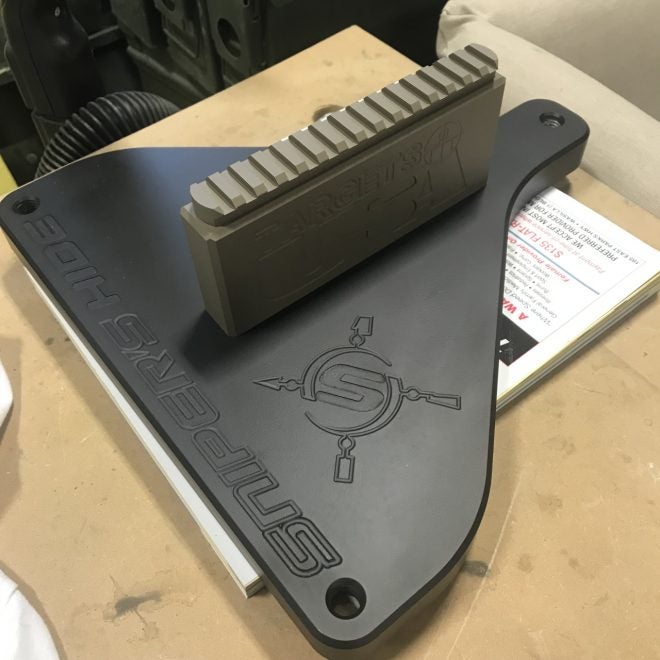Intro:
Let me start by saying this is not a tool that every shooter must have. It is not even a tool that every long-range shooter must have, but if you are the type of person that likes to test and control for every variable in your shooting system, this may be a valuable arrow to add to your quiver. I like to compare the Scope Tool from Targets USA to a borescope as far as usefulness. 99% of the time you don’t need it and it sits dormant on the shelf. Fortunately, in the case of the Scope Tool, it has a nice aesthetic as it sits there. Then comes the moment when something isn’t quite right. You missed a shot at long range. You were certain you had the right dope. Your loads were perfect, with SDs in the single digits and ESs in the low teens. Your rifle is a tac driver putting holes on top of holes. Everything has been torqued and Loctited. What could it have been?
Maybe it was the scope. Believe it or not, minute errors in scope tracking can have a huge impact on results at long range. For example, last weekend I was shooting my .308 Steyr Scout at 1,000 yards. With my ammo and atmospherics, I had to adjust 414 inches above the target. If my scope had been tracking just 4% shy I would have impacted 16.5 inches low of my point of aim, which in my case would have missed the target completely.
So, how do you know if your scope is tracking correctly? This is when the Scope Tool finally gets a chance to spring into action. Well, spring may not be the right verb to use. Weighing in right around 30 lbs, the Scope Tool doesn’t exactly spring anywhere, and that is just the point. To put it simply, the Scope Tool is a heavy metal base with leveling feet and a 1913/Picatinny rail for the attaching of optics.
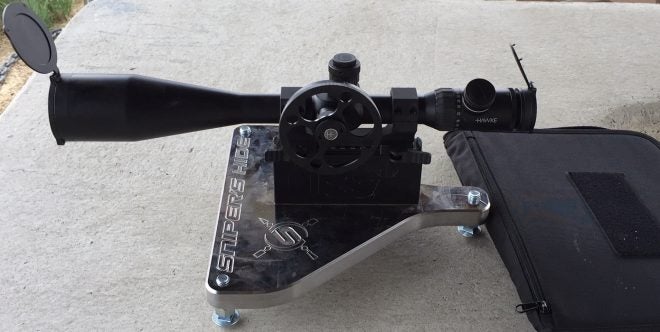
Definitely a neat looking piece of hardware.
Testing tracking:
The Scope Tool is very simple to use. First, determine the click value for your scope (usually ¼ MOA or .1 mil). Then, make a target to view using measurements that are applicable to your scope adjustment and the range you will be viewing at (i.e marks every 1.8 inches for a mil based scope viewing at 100 yards). Be sure the target is tall enough to test the entire range of travel you intend to use. Mount the scope to the Targets USA Scope Tool. Place your test target at the predetermined distance and view it through the scope. Adjust the leveling feet so the reticle lines up with the test target. As you adjust the scope it should track along the lines on your target (this tells you the reticle is properly aligned in the erector assembly.) Also, the marking on the turret should align with the markings on the paper (i.e 10 mils should have covered 36” at 100 yards on the paper). If this is not the case some simple math will allow you to determine what percentage strong or weak your scope is tracking. In my testing 2% error was common. Fortunately, by using this tool I was able to determine that the error I was seeing was consistent. This allowed me to factor that 2% into my ballistic solutions and make first round hits. A secondary redneck method is pictured below. Line up a mark and the reticle with a given point (a horizontal line on a house), adjust 10 mils and view the scope to confirm 10 mils of adjustment took place. This works as long as the reticle was properly etched and the parallax is dialed out.
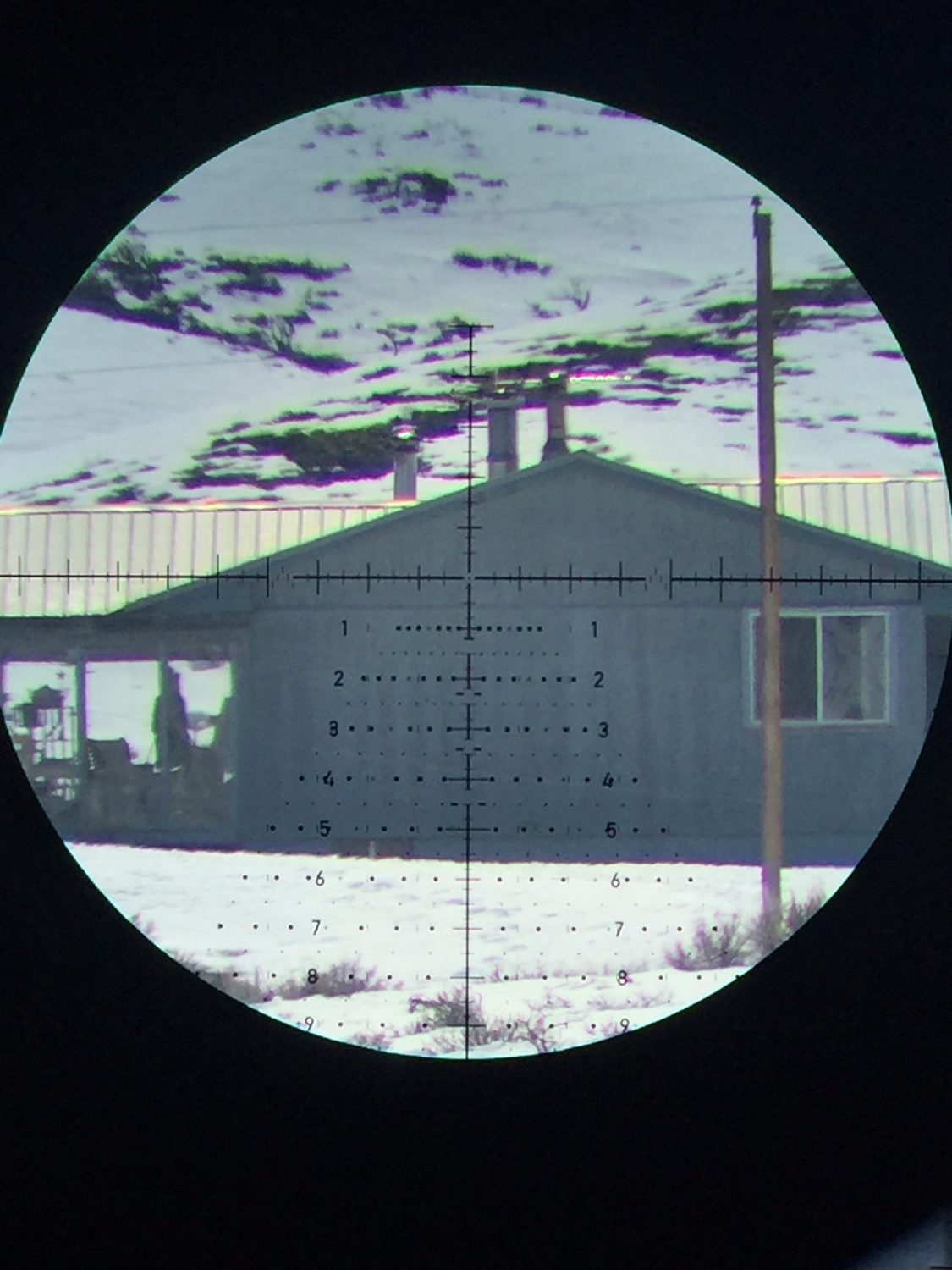
My redneck method. The scope was mounted on the Targets USA Scope Tool, not a rifle.
The Scope Tool vs. Box Testing
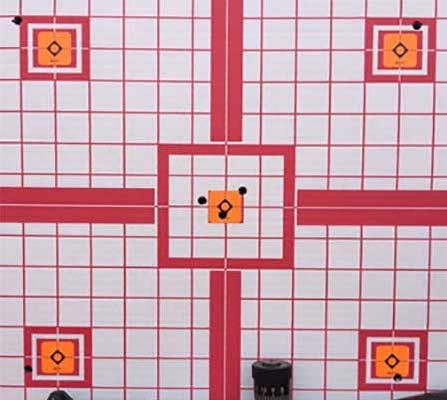
Typical Box test results. Photo from google images.
Some would ask why The Scope Tool is even a thing when they could just go out and “box test” their new scope. For those that are not familiar, “box testing” is the process in which the shooter maintains the same point of aim (POA), adjusts the scope a set distance, fires a round and measures the offset from the point of aim to the point of impact (POI) and compares that measurement to the value input on a scope. Box testing is usually conducted at 100 yards and unfortunately, most people will conduct it with less than 1 ft. of total travel. At 100 yards 1 ft. is only about 3.5 mils or 12 MOA, nowhere near the range of travel a typical long-range shooter will use. Another problem is that the mechanical accuracy of the rifle and the ability of the shooter add two more variables to the “box test” test. When dialing on 12 MOA the same 4% error I mentioned earlier would only result in 1/2 inch deviation on paper at 100 yards. Most shooters would be happy to impact within 1/2 of an inch of their desired target and never think something was wrong.
Other uses:
Just as important as tracking correctly is returning to zero. With your scope attached to the Scope Tool, it is easy to run the entire range of travel and confirm the zero setting on the dial coincides with the original POA. Once again even with a rifle capable of shoot 1/2 MOA groups, this might not show up in live fire testing.
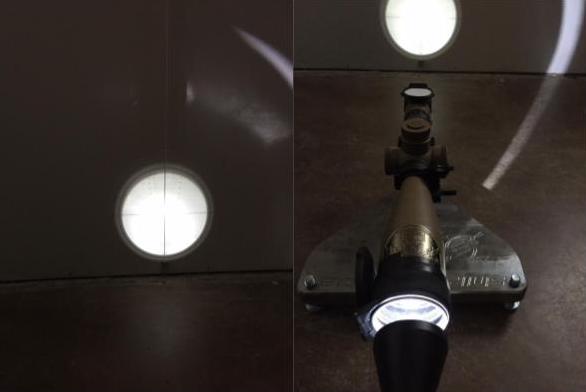
Leveling the reticle to the plumb-line, then leveling my anti-cant device.
I also found this tool to be very handy when installing a level. I will save the importance of using a leveling device on your scope for another article, but long story short, a slight amount of cant can have a drastic effect on both elevation and windage at a range. I used the Scope Tool combined with a plumb-line and a flashlight shined through the objective to level my bubble before even going to the range.
Final Thoughts:
At $325 this is certainly not a tool for the weekend plinker or even the average long-range shooter. I could see it being worthwhile for a shop selling scopes and offering scope mounting services. It also would not be unreasonable for a club or group of shooters to buy one to share. It has a very specific function and performs well and looks cool to boot. It eliminates one variable from the shooting system which is one less question to be rolling around in your mind pre-shot. Sometimes that peace of mind is worth a lot.
For more information or to purchase please visit: http://www.targetsusa.com/scope-tools.html
 Your Privacy Choices
Your Privacy Choices
